Saturday, May 25, 2013
Auto-generated 3D Models - Appendix A
Today Sancho is puzzled: he is closely watching, on the experimental area, in Rome, of the new Google Earth version, the auto-generated 3D model of St. John Lateran's Archbasilica.
The model has attracted his attention because it seems significantly different - in a good way - than the auto-generated 3D Models of the surrounding buildings...
In this appendix I will only expose "the facts" ("the images") for two models, leaving the reader - for additional comments and considerations - to PART 4 of my article, which I plan to publish in the course of the next week.
Enrico Dalbosco (Arrigo Silva) - Padova, May 25, 2013
Index of contents
PART 1 - ENVIRONMENT
PART 2 - A VISUAL CONFRONTATION
PART 3 - CEZANNE'S LESSON
PART 4 - [... work in process ...]
Appendix A - ABOUT ST. JOHN AUTO-GENERATED <== Current Post
In this appendix we will examine two current models of the Archbasilica St. John Lateran. The first is the auto-generated model as it appears today (24 May 2013) in the experimental area of Rome in Google Earth, and the second is the hand-made model promoted on Photorealistic layer in the Trimble 3D-Warehouse.
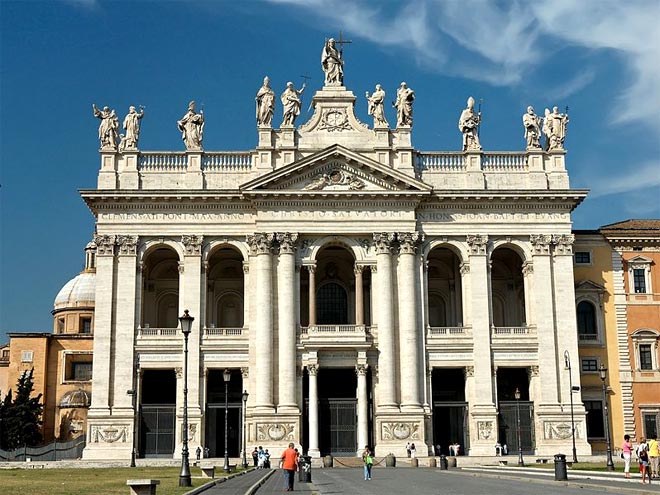
Of the façade by Alessandro Galilei (1735), the cliché assessment has ever been that it is the façade of a palace, not of a church. Galilei's front, which is a screen across the older front creating a narthex or vestibule, does express the nave and double aisles of the basilica, which required a central bay wider than the rest of the sequence; Galilei provided it, without abandoning the range of identical arch-headed openings, by extending the central window by flanking columns that support the arch, in the familiar Serlian motif.
[from WikipediA]
Exploring the new version of Google Earth in the experimental area of Rome, you may notice that not all the buildings are made with the same degree of accuracy. In particular you will appreciate some buildings characterized by a greater cleaning: it is the case of St. John Lateran, which emerges from the surrounding landscape, rather approximate (see point "x" in the illustration below), especially for the befitting execution of the southern domes (see point "y").
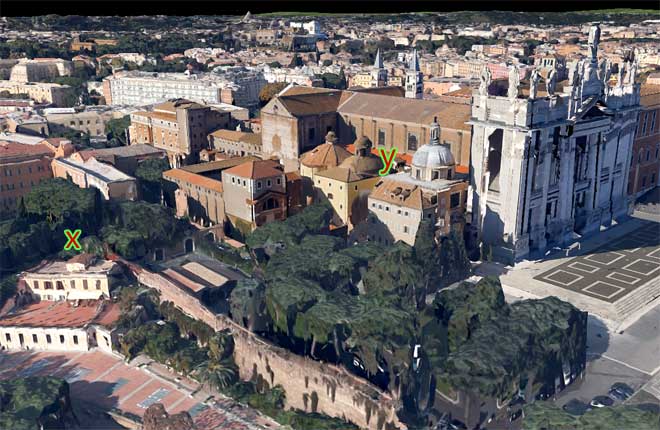
Intrigued by these differences in look, I wanted to investigate the case "San Giovanni", looking closely at the specific points marked (see the following illustration) with A, B, C, D, E.
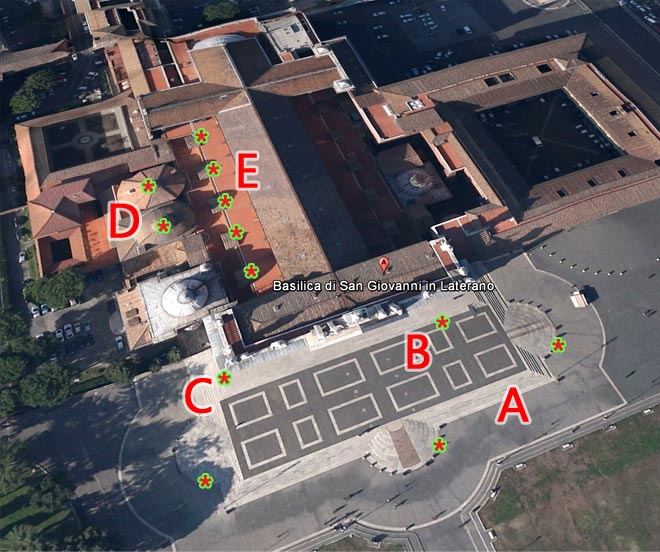
And here's a brief description of my observations on these points in the Scenario X (with the auto-generated models):
A - THE SMALL RAMPS
the wide stairway has, in the real world, three elegant small semi-circular ramps, while the model auto-generated shows only the one to the west
B - THE SHADOWS
the photo of the Google Earth's terrain was probably kept about 4:00 PM and so the platform in front of the facade is fully illuminated, while in the 3D auto-generated model it is partially shaded
C - THE LEDGES AND STATUES
the facade of the Basilica is very complex, with numerous protrusions and recesses, with gables and eaves and statues; most of these "details" are also present in the model auto-generated, while lacking in almost all other buildings of Scenario X
D - THE LITTLE DOMES
the small southern domes of the basilica present the characteristic mushroom shape, which are reproduced in an acceptable way in auto-generated the model, while in many other cases of Scenario X they are not equally reproduced
E - THE SKYLIGHTS
on the southern side of the basilica there are five little skylights that are correctly reproduced in the model auto-generated, while in many other buildings they are not equally well reproduced
The following image shows the points B, C, D on the 3D auto-generated model, as is appears in the new version of Google Earth today May 24, 2013.
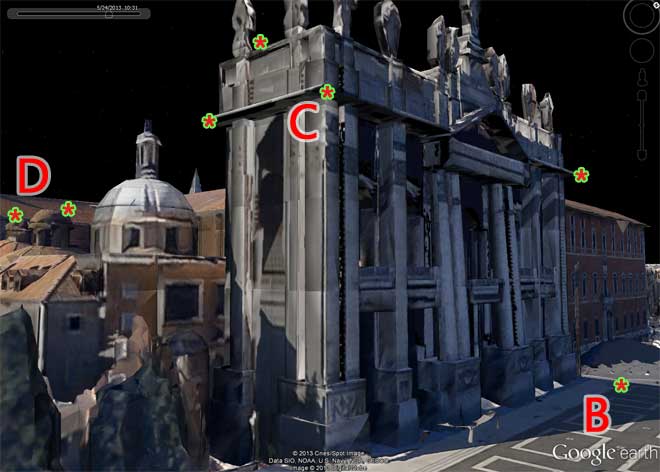
At this point, stimulated by the details C and D, I have performed a search in the Trimble 3D-Warehouse and I found the model shown in the next picture, that - already seen from afar - made me realize to be on the right track.
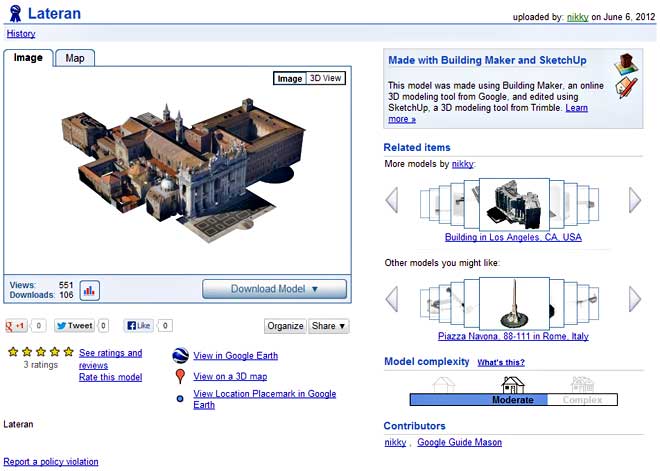
The model was created June 6, 2012 by the "nikky" user (wich "has not created a profile yet") and last updated June 14, 2012 by the user "Google Guide Mason" (wich similarly "has not created a profile yet").
The most interesting fact is that the model has been created using Building Maker - and this can be investigated by entering the model and extracting the 4 isometric views typical of that tool -, and therefore has been enhanced using SketchUp 7 - as can be seen also by some details related mainly to the domes and ledges.
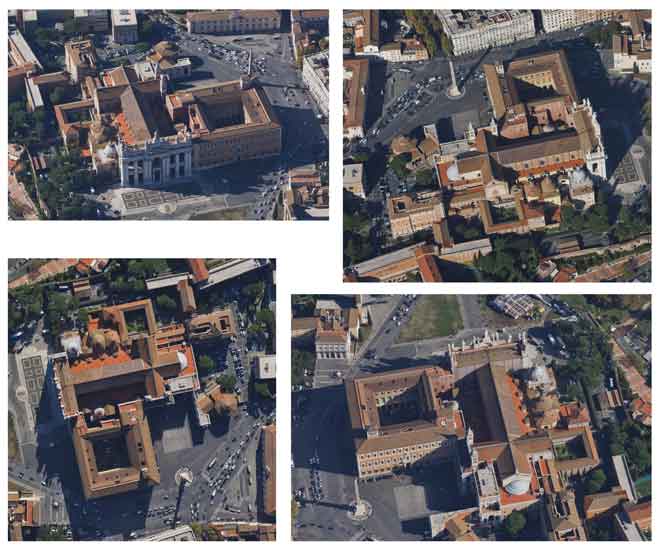
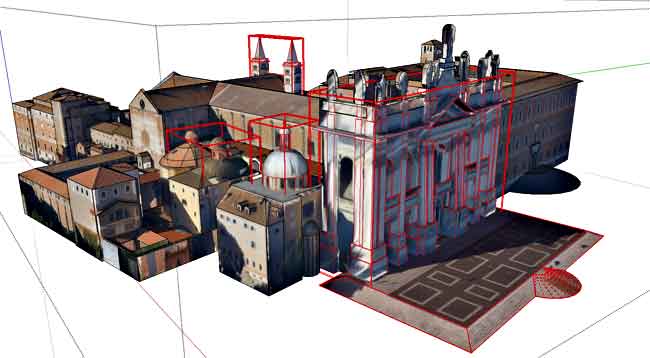
In the following couples of images now I provide a comparison between the two models as well as you can see in Scenarios X and Y as at 24 May 2013.
hover the mouse over the written X... and Y...
to see the image in the corresponding Scenario
(perhaps you may have to wait a few seconds before you see the Y images)
A - THE SMALL RAMPS and B - THE SHADOWS
X hover the mouse to see Scenario X with auto-generated 3D Models
Y hover the mouse to see Scenario Y with hand-made 3D Models
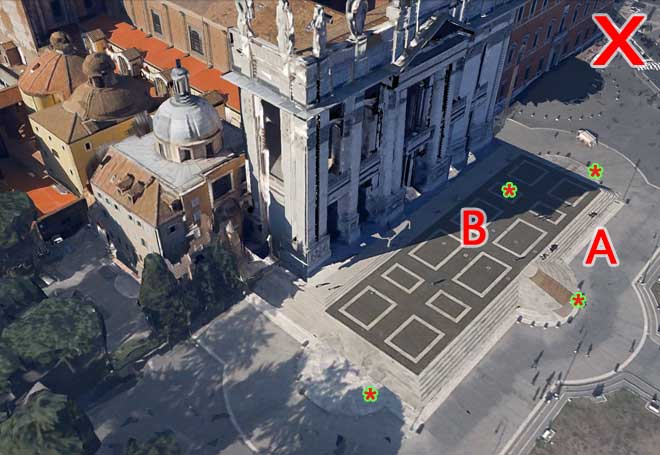
C - THE LEDGES AND STATUES
X hover the mouse to see Scenario X with auto-generated 3D Models
Y hover the mouse to see Scenario Y with hand-made 3D Models
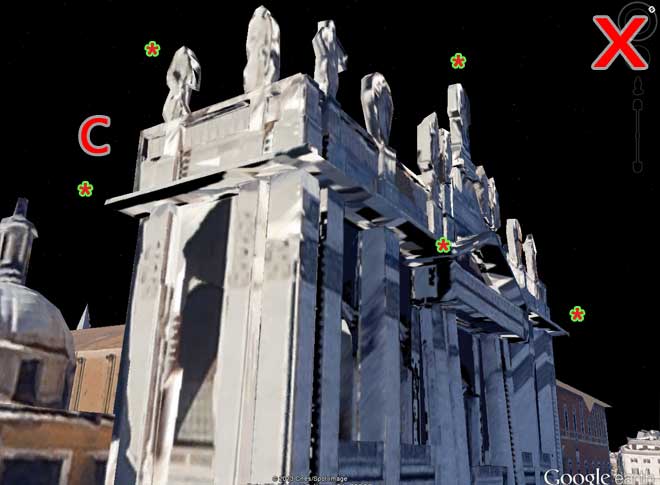
D - THE LITTLE DOMES and E - THE SKYLIGHTS
X hover the mouse to see Scenario X with auto-generated 3D Models
Y hover the mouse to see Scenario Y with hand-made 3D Models
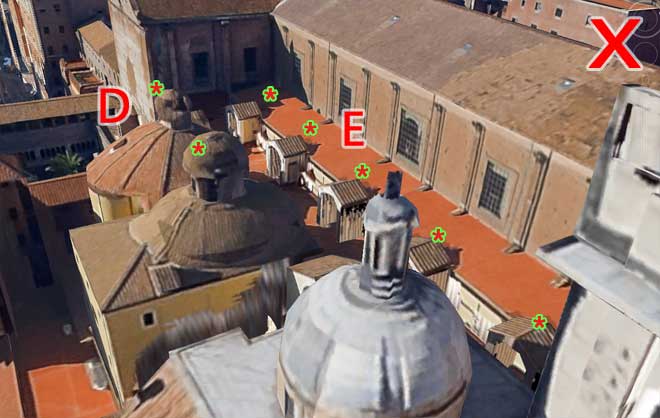

To allow a careful examination, I carry over into the following the three pairs of images:

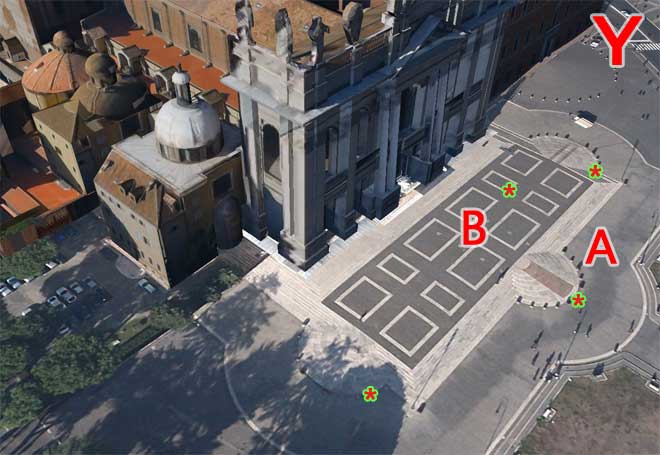

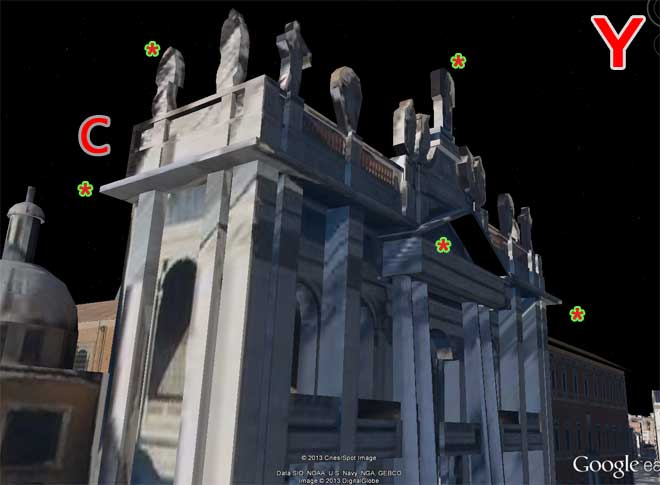

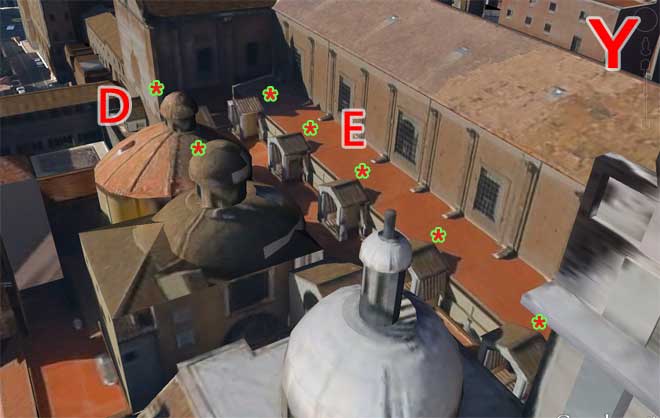

How to interpret the similarities and differences?
It 's true that the 'human' modelers will no longer be part of the development of 3D models?
I personally for some time have made a clear idea about these topics - and of course also you would have gained your beliefs.
But on these and other topics we can discuss (probably the next week) in the oncoming Part 4.
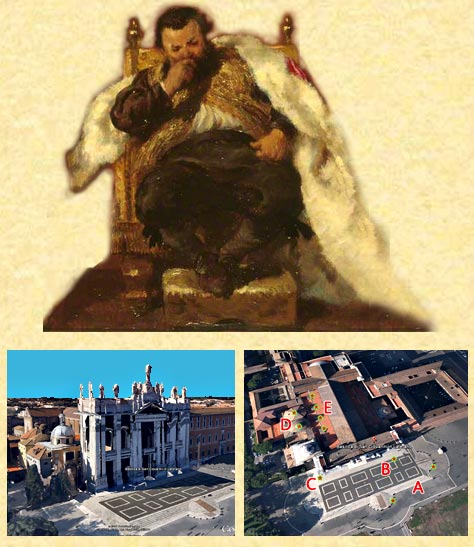
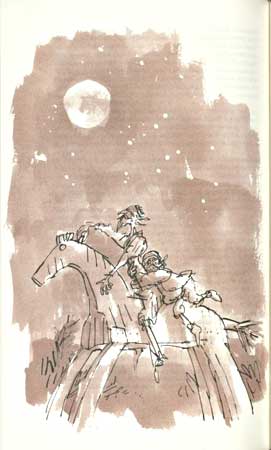

Post a Comment